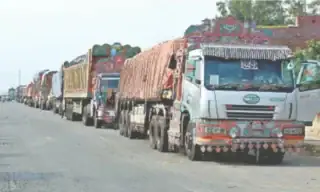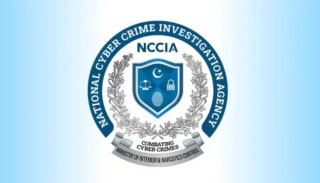Syngenta Pakistan Launched an AI-Enabled App on Which farmers Can Diagnose Crop Pests and Diseases

Syngenta is one of the world’s leading agriculture companies, comprised of Syngenta Crop Protection and Syngenta Seeds. They aim to improve the sustainability, quality, and safety of agriculture with world-class science and innovative crop solutions. Syngenta Pakistan Limited is a subsidiary of Syngenta, a leading agriculture innovation, and technology company – providing crop protection, biologicals, seeds, crop-enhancement products, and digital services to millions of Pakistani farmers, has successfully launched the updated version of its “Cropwise Grower” app.
The Cropwise Grower app allows farmers to conveniently detect and diagnose crop pests & diseases by simply taking a picture of a crop while also guiding farmers about the recommended products and application technology all in 5 seconds time with over 93% accuracy versus the usual human accuracy of 72%.
This ‘Snap, Diagnosis and Solution’ feature, powered by an artificial intelligence technology company called Plantix, gives a competitive edge to the Cropwise Grower app among all the other locally-available apps – this is a first-of-its-kind offering in the crop protection industry.
The main idea and goal of Syngenta revolves around their theory which says;
“The Sustainable Outcomes in Agriculture (SOA) standard is part of the Cropwise™ Sustainability App. Growers who use the App to complete a self-assessment about their practices will receive a performance report, including a sustainability leadership score and actionable insights to identify how they can improve sustainability in their operations.”
The Cropwise Grower app also provides growers with access to agronomic advice, weather forecasts, recommendations on choosing the right time for spraying during the day, historic weather trends for the past 6 months, and insights into the respective region’s crop disease problems for more tailored solutions.
Through this app, farmers will be facilitated in increasing their yields through timely advice and access to remedies by employing a preventative approach versus the treatment approach for farmers in the region – if a disease is detected on a particular crop in one location, all farmers in that areas are alerted to keep a watchful eye for the disease.
Zeeshan Hasib Baig, General Manager of Syngenta Pakistan, shared that;
“Syngenta Pakistan’s core strength lies in its relationship with the growers. To further strengthen the grower-connect, we want to “delight” our growers by bringing smart solutions closer to farmers that can enable them to be more self-sufficient. We have always believed that technology can be a key enabler in helping farmers grow efficiently and sustainably. The Cropwise Grower app is a revolutionary step in the crop protection industry and we firmly believe that it will help in addressing Pakistan’s food security challenges by building resilient food systems and by supporting our farmers in improving their crop yields.”
Syngenta and image recognition specialist, Plantix, have launched a partnership to provide at least half a million smallholder farmers across the Asia Pacific with access to artificial intelligence (AI)-enabled digital farming tools. With a rollout covering five countries and 750,000 hectares of farmland, the farming app will widen access to smart farming features for half a million farmers producing staple cash crops such as cotton, rice, corn, wheat, and more.
The partnership gives Asia’s smallholder farmers access to a global database of over 50 crops and 500 diseases, which will be available through Syngenta’s Cropwise Grower app for farmers. The app uses the power of data to protect crop yields with on-demand advice on agricultural best practices and crop protection solutions. Using AI, Cropwise Grower will allow farmers to take a photo of their crop problem and, in real-time, diagnose crop pests and diseases with 93 percent accuracy. The Plantix algorithms analyze the image to identify the issue and provide a recommendation. The uploaded photos are also geotagged so that the app can alert farmers with early warnings when pest and disease pressures are identified in their surrounding area.
Read More:
Muneeb is a full-time News/Tech writer at TechJuice.pk. He is a passionate follower of the IT progression of Pakistan and the world and wants to educate the people of Pakistan about tech affairs. His favorite part about being a tech writer is tech reviews and giving an honest and clear verdict to his readers.
Contact Muneeb on his LinkedIn at: https://www.linkedin.com/in/muneeb-ur-rehman-b5ab45240/


 4 min read
4 min read

















